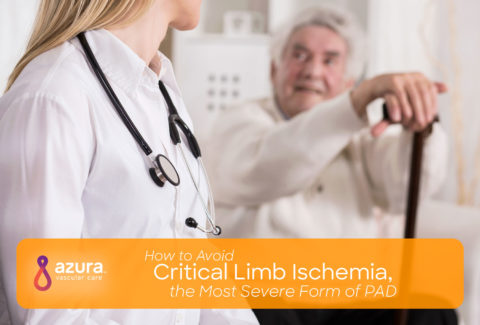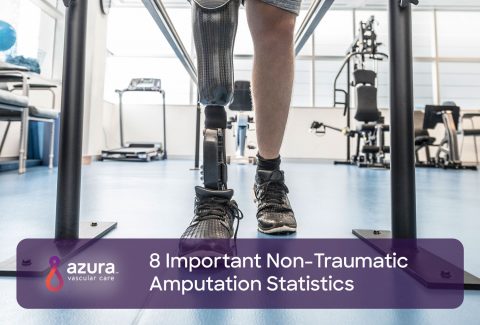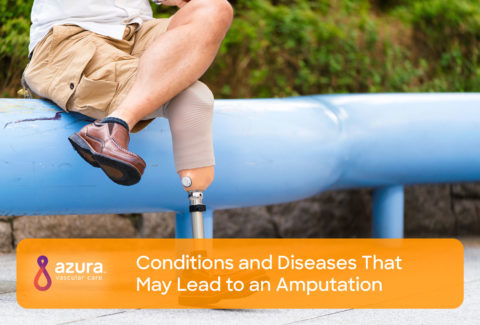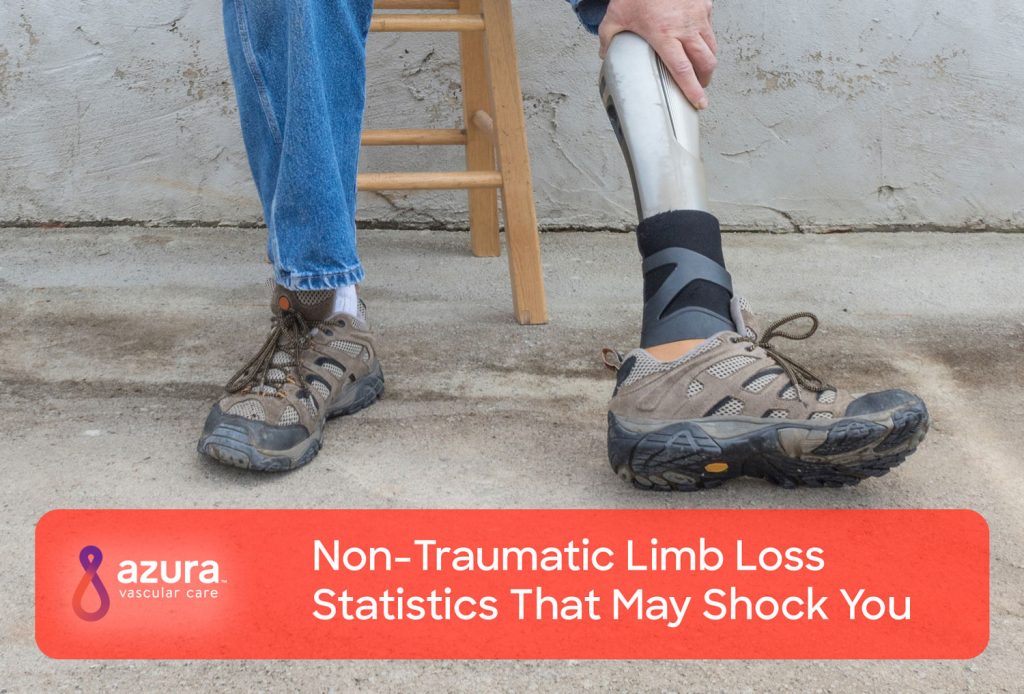
Living with the loss of a limb is more common than you might think. There are nearly 2 million people in the United States living with limb loss and according to a year-long study, by 2050 3.6 million people are estimated to be living with limb loss. (i)
Vascular conditions such as peripheral artery disease (PAD) account for the greatest number of amputations, followed by trauma; cancer; and birth defects. (i)
While this study doesn’t include specific details about lower limb loss statistics due to non-traumatic amputations, what the study’s researchers did find may be alarming, particularly for people with PAD and diabetes.
Non-Traumatic Limb Loss Statistics
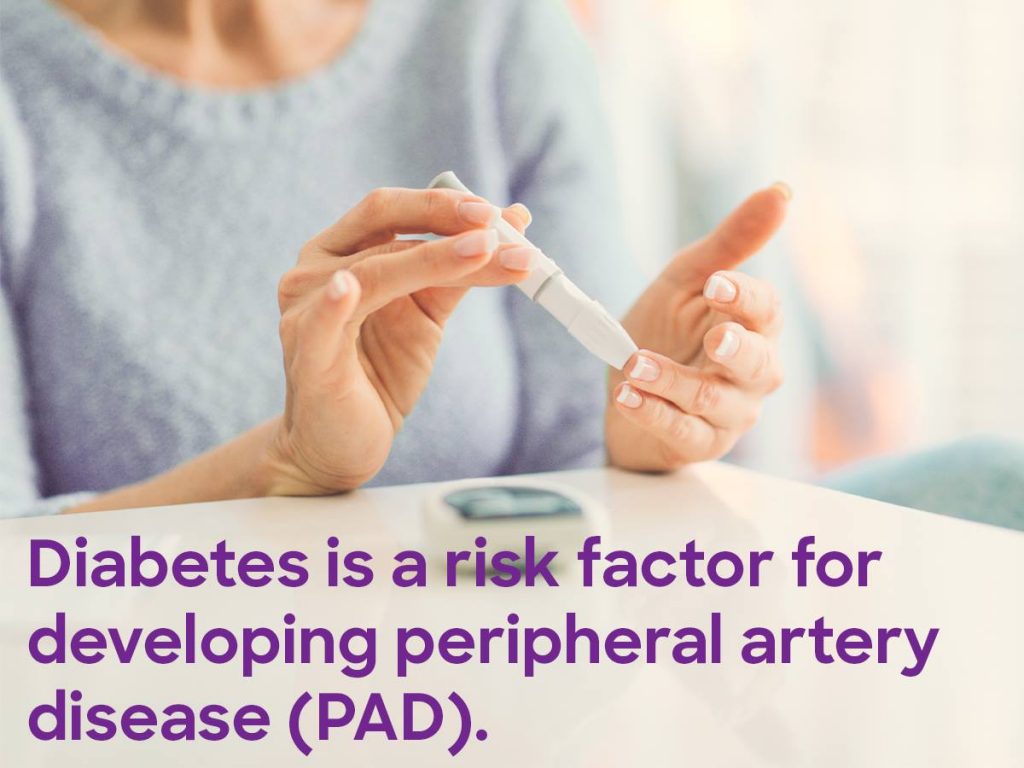
According to the above data, the year-long study found:
- Those with diabetes have a 10 times higher risk of amputation compared to those without diabetes. (i)
- Among those with diabetes, African Americans, Hispanics, and Native Americans are at a significantly higher risk for lower limb loss than whites. (i)
- Amputation due to poor vascular health accounts for the majority (82 percent) of amputations in the United States, and this trend is expected to rise as more people develop PAD and diabetes. (ii)
- The risk of readmission to the hospital after a minor amputation is increased when you have chronic diseases such as PAD, hypertension, kidney failure, or previous leg bypass surgery. (iii)
Diabetes, PAD and Limb Loss
Diabetes is a major cause of PAD and PAD is an important risk factor for chronic foot ulcers that can lead to lower extremity amputation in diabetic patients.
Another look at lower limb loss statistics found diabetic foot syndrome to be the primary cause of non-traumatic amputations. (iv) Diabetic foot syndrome is another term for the recurring infections, joint damage, and non-healing foot ulcers that often lead to amputation in patients with diabetes.
This happens when blood vessels develop atherosclerosis, which is the buildup of plaque, inside the vessel walls. As the plaque builds up, it makes the vessels narrower, slowing blood flow. When a blockage hardens or becomes brittle, it may rupture, causing a blood clot to form. A clot may completely block the artery, which is particularly worrisome if the blockage occurs in your legs. (iv) In fact, total loss of circulation to the legs or feet can cause gangrene, which may require amputation. (v)
Vascular disease includes any condition that affects circulation in the body, including PAD. PAD commonly occurs in the lower limbs and results from a blockage or narrowing of the arteries that restricts blood flow to the legs and feet. PAD progresses differently for each person, depending on where in the body the plaque has formed and the person’s overall health. Waiting too long or letting the condition go untreated can increase your risk for more serious complications and may leave amputation as the only treatment option.
PAD Risk Factors

- Being 50 years of age or older
- Having diabetes
- Being obese
- Being physically inactive
- Smoking
- Having high cholesterol
- Having high blood pressure
Race may also play a role. The risk of amputation for minorities is two to three times. (vi) In fact, one in 90 non-whites live with loss of a limb compared with only one in 250 white Americans.(i) Read our article on these PAD risk factors to learn more
PAD Treatment Options
The initial treatment for PAD includes lifestyle changes, diet and exercise, and medications to lower cholesterol and blood pressure. For more advanced cases, minimally invasive procedures or stents to widen the arteries may be needed. Left untreated, however, PAD can lead to amputation.
If you and your doctor suspect you may have PAD, please contact our team of interventional radiologists and vascular surgeons. We are leaders in vascular care and have the resources to diagnose, treat and manage PAD.
Sources:
(i) Varma P, Stineman MG, Dillingham TR. Physical Medicine and Rehabilitation Clinics of North America Epidemiology of Limb Loss. Physical medicine and rehabilitation clinics of North America. 2014;25(1):1-8. doi:10.1016/j.pmr.2013.09.001.
(ii) Sauter CN, Pezzin LE, Dillingham TR. Functional Outcomes of Persons Undergoing Dysvascular Lower Extremity Amputations: Effect of a Post-Acute Rehabilitation Setting. American journal of physical medicine & rehabilitation / Association of Academic Physiatrists. 2013;92(4):287-296. doi:10.1097/PHM.0b013e31827d620d.
(iii) Beaulieu, R. J., Grimm, J. C., Lyu, H., Abularrage, C. J., & Perler, B. A. (2015). Rates and predictors of readmission after lower extremity amputations. Journal of Vascular Surgery, 62(1), 101-105.
(iv) Rümenapf, G. and Morbach, S. Amputation Statistics—How to Interpret Them? Dtsch Arztebl Int. 2017 Feb; 114(8): 128–129. https://dx.doi.org/10.3238%2Farztebl.2017.0128
(v) American Heart Association. About Peripheral Artery Disease (PAD) http://www.heart.org/HEARTORG/Conditions/VascularHealth/PeripheralArteryDisease/About-Peripheral-Artery-Disease-PAD_UCM_301301_Article.jsp#.WsPeuJch3IU (accessed April 3, 2018)
(vi) http://togetheragainstlimbloss.com/
